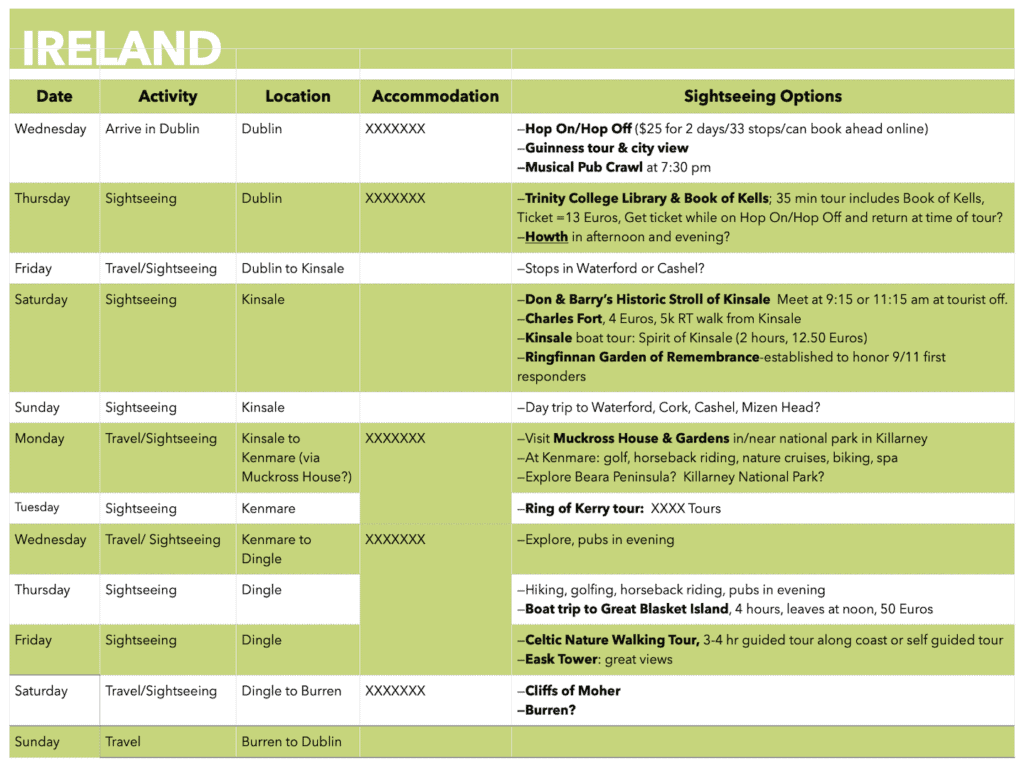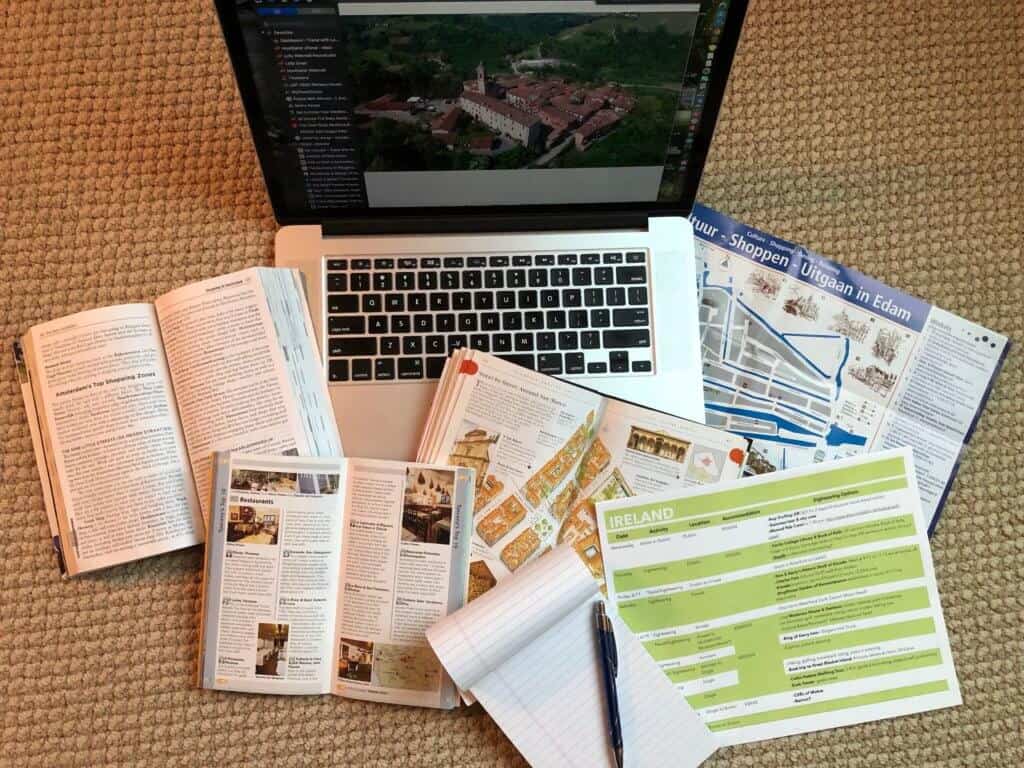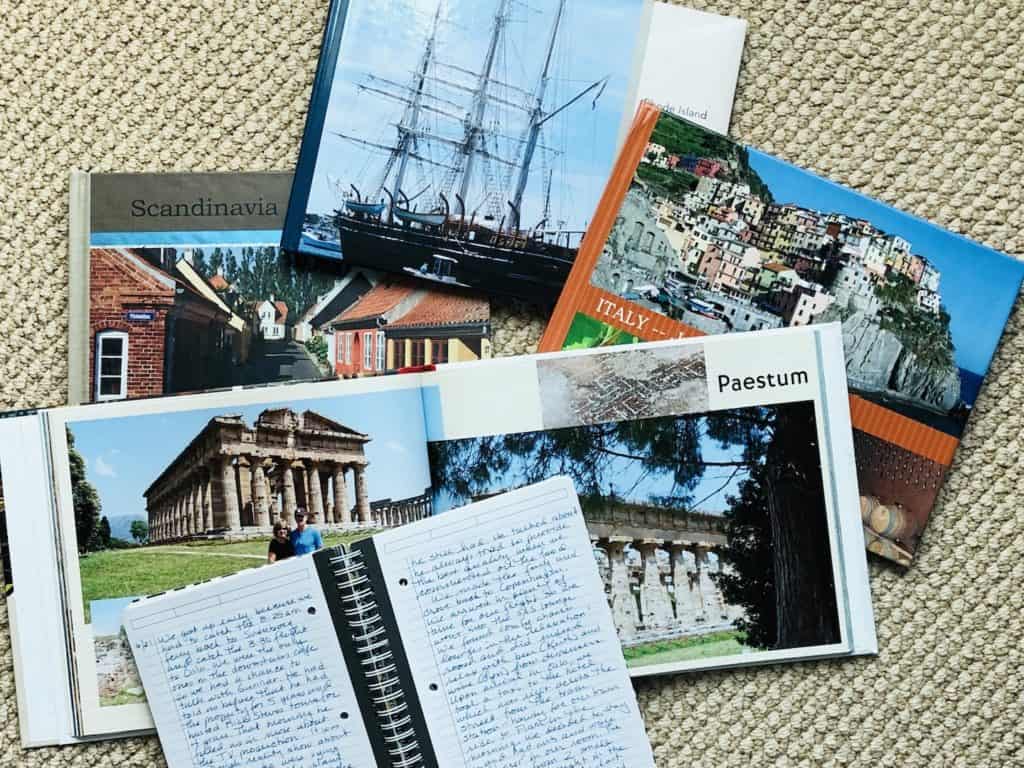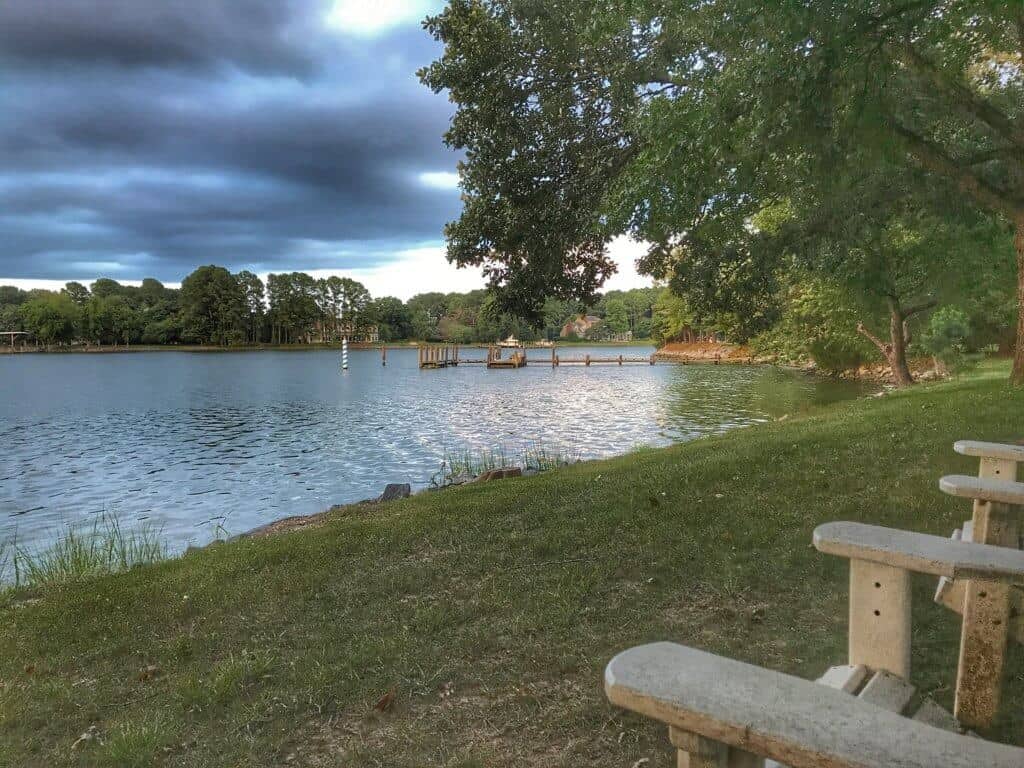Road trips can be fun weekend getaways or even entire vacations. One thing that makes them so appealing is their flexibility: you’re driving your own vehicle, stopping along the way when you discover an unexpected gem to explore or for a bite to eat, and finally turning in for the day. With some careful planning ahead of time, you can help make sure your trip is as enjoyable and stress-free as possible. Be prepared! That scout’s adage I learned decades ago is especially true when planning a road trip. Here are the most important tips to help you as you plan your journey.
#1 Get Inspired and Start Planning!
You may have a rough idea of where you’d like to visit. But you may not be aware of all the places along the way that might actually be good spots to stop for a bit. Think hikes with scenic views; historic sites; a winery, distillery, or brew pub; amusement parks; sporting venues; and unique establishments.
Get inspired for your trip and find some fun places that interest you and those in your group. There are always guidebooks (purchased or borrowed from your local public library) that provide ideas for activities, popular sites, accommodations, and dining. In addition, here are some helpful websites that you may consider:
- Pinterest – Pinterest is loaded with ideas for just about every kind of thing you can imagine, and there are tons of “pins” (that link to online articles) profiling places to visit and things to do while there.
- Google Maps – Plan your trip on Google Maps (using a Google account) adding the stops you plan to make along the way. Google Maps provides reviews on many places, so that can help you make decisions. Also, you can easily share your travel route with others and save your map for offline viewing – a bonus when traveling in areas without good cell service. Of course, Google Maps also provide driving directions.
- Roadtrippers – Roadtrippers helps you plan your road trip with the places you plan to visit. It provides driving time between scheduled stops, mileage, approximate cost of gas as well as some curated trip plans to inspire you. In addition, it has filters you can select so you can add other spots that you may not have considered at first. For example, you can search for restaurants, entertainment venues, landmarks, campsites, and the like. The more filters you select, the more specific your results will be — such as independently-owned restaurants with 4-star ratings or above.
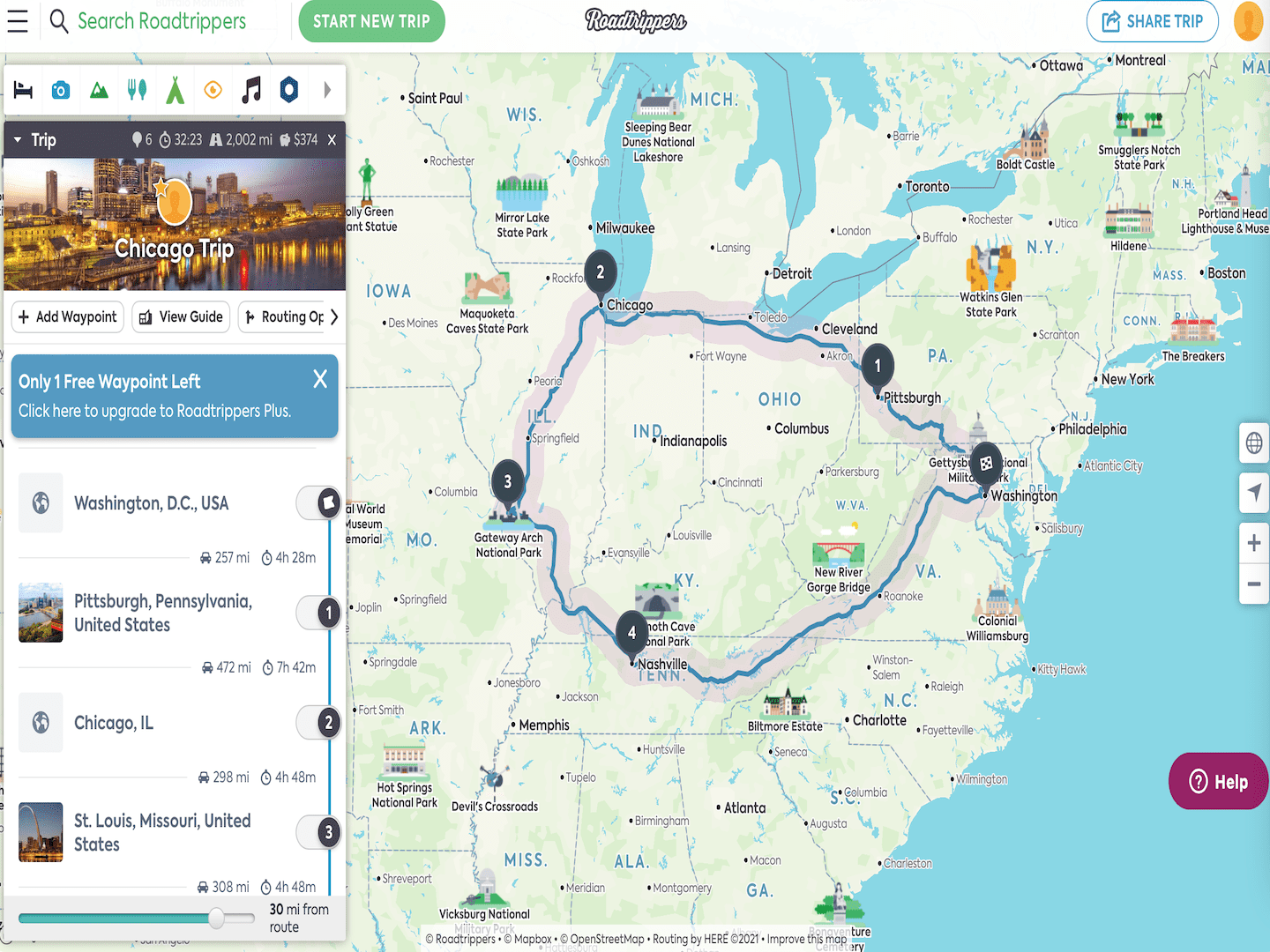
#2 Get Organized!
Once you know where you’re going, it’s time to organize the information you’ll need while away. Prior to a road trip; choose what museums, parks, and other places you want to visit; note when those sites are open, and then plan where to stay and eat based on that information. After a little juggling, develop an itinerary that works. Bear in mind that some museums and restaurants may be closed early in the week or have limited hours.
Consider formulating a written plan/itinerary with some of the trip details. You can document your plans showing the travel dates, what you plan to visit each day, and specifics on any tickets and reservations booked for that day.
For me, creating a chart or table is very helpful. When planning, I create a Google doc on my computer and share it what my husband so he can easily review and comment. I use the headings Dates (that includes the day of the week), Where We’ll Be, Driving Time (from one place to another), and What We’ll See and Do. Including the day of the week with the actual date helps me plan because I know not to schedule something like a museum visit on a Monday if I learn that the museum is closed that day of the week. Whatever means you use to plan your journey, share the document with others traveling with you — and if created online (like in Google), save it for offline viewing, so it can be accessed even if cell service is weak where you happen to be.
Once you know where you want to go and what you want to do, the next step is to:
- book your lodging.
- purchase tickets online to the places that are your must-sees. That way, you know you’re guaranteed admittance.
- book dinner reservations. Get tips on good places from the hotel or inn where you’ll be staying and from online review sites (TripAdvisor, Yelp, and/or those already mentioned). With reservations, you’ll be guaranteed a table and won’t have to stand in line or be on a waitlist when you want to dine. Many restaurants use Open Table or Resy to manage reservations; these are good tools because it’s often easy to manage your reservations once they’re made. For example, maybe your plans change for tomorrow, and you realize you would prefer an earlier dinner reservation – sometimes all you need to do is go to the restaurant’s Open Table or Resy online reservation, and see if there’s a table at the time you want. By the way, if you don’t find availability on Open Table or Resy, call the restaurant as sometimes they are able to accommodate requests.
#3 Make Sure Your Car is Ready for the Road
Of course, it’s important to check your vehicle’s gas and fluid levels as well as tire pressure. Also, check for documents related to driving: driver’s licenses for every driver in your party, vehicle registration card, vehicle insurance card, and your vehicle’s owner’s manual (just in case!).
#4 Outfit Your Vehicle with Handy Items for Your Trip
Think about your car, what you might need on the road, and the comfort of you and your passengers. Stock your vehicle with handy items for on-the-road traveling:
- water and snacks like fruit, cut-up veggies, granola bars, and nuts
- bin/container with helpful items like sunscreen, insect repellant, disinfecting wipes, hand sanitizer, tissues, paper towels, and small bags for trash
- power cords for devices you’ll be using while driving
- portable charger for devices
- earbuds or headphones if some passengers want to listen to something other than what the driver chooses
- first aid kit
- umbrellas
- binoculars if you’re planning on taking in some scenic views
- collapsible outdoor chairs for picnicking on the road
- hiking/trekking poles for hiking on uneven terrain
- seasonal vehicle gear like ice scrapers and a small shovel for snow
- games or cards to amuse passengers on long rides
- portable speaker for time in your guest room (or while you’re picnicking along the way)
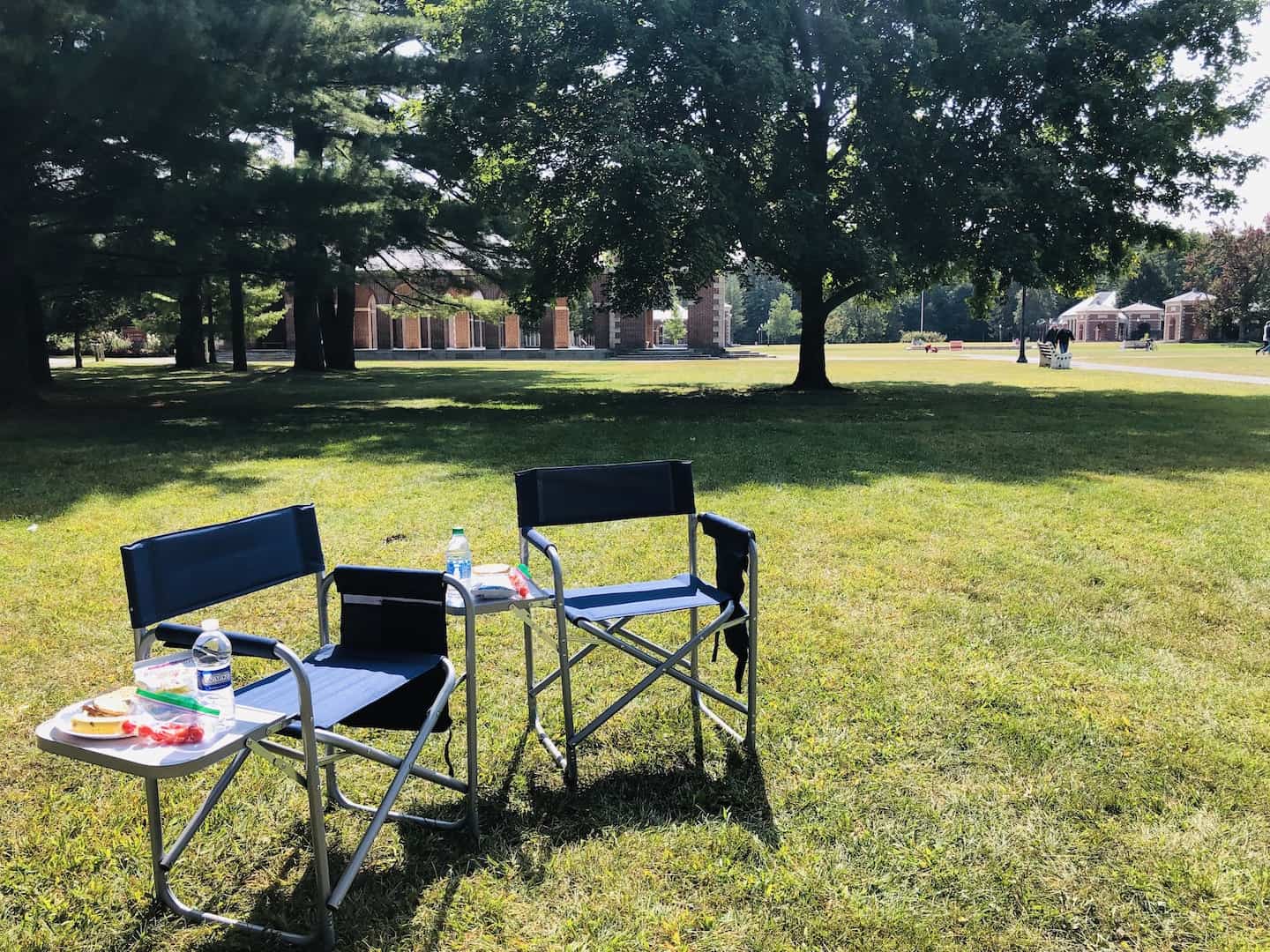
#5 Check the Weather
Check the weather forecast for the places you plan to visit as you get close to departure time. This will help you pack the clothes and gear you’ll need for the elements you’re likely to encounter. Knowing the forecasted weather could also lead you to modify your itinerary a bit. Some helpful weather sites and smartphone apps are The Weather Channel and Accuweather.
#6 Plan Meals on the Go
If you have a busy day of activity, consider bringing along breakfast and/or lunch nibbles. It saves time during the day (no sitting at a table waiting to be served). Traveling with some food provides flexibility because you can have your breakfast as you’re getting ready in the morning and/or have a picnic lunch to enjoy at a scenic spot along the way or on a hike. My husband and I found we liked the chance to take our time in the morning and realized that picnicking — wherever lunchtime finds us — was a fun experience. Being prepared with some food helps you get the most out of a day whether you’ll be driving, exploring a national or state park, or just wanting to enjoy the great outdoors some more. Don’t overthink this because you can take along what you think you’ll eat in the early part of your trip and restock on the road.
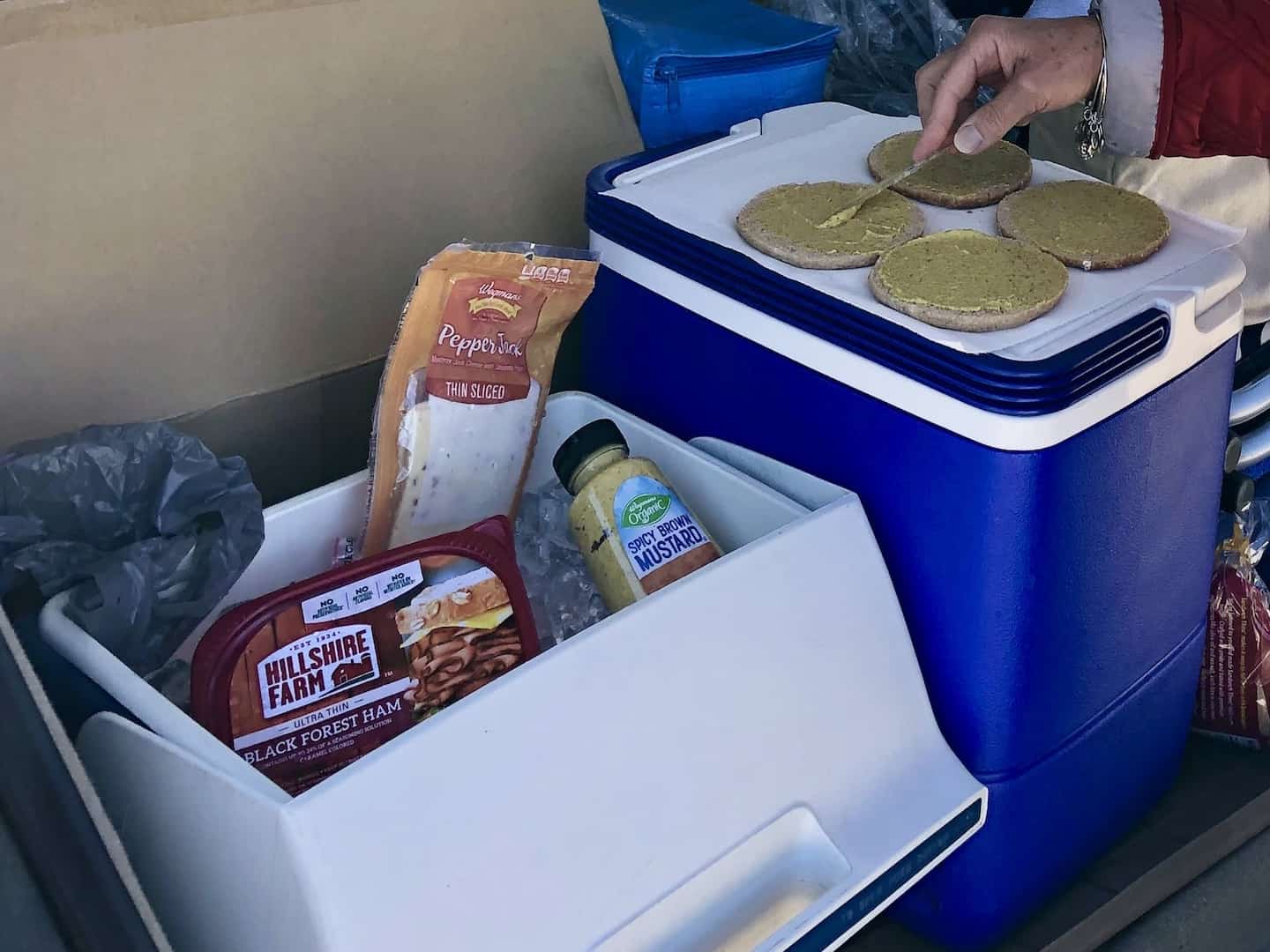
Also, you may want to pack snacks and beverages for your B&B/inn/hotel room. Don’t assume that minibars or a hotel’s convenience area will be fully stocked – and you may not really want to incur that extra (sometimes expensive) charge. (I sometimes pack a separate bag with a bottle of wine, some unbreakable glasses/cups, and munchies to enjoy after a long day out and about. Happy Hour is ready in a flash and we can enjoy some downtime before heading out for the evening.)
#7 Use Helpful Travel Apps
There are a number of websites and apps to help you plan your trips and manage your travel along the way. Check out my page of best travel apps for a complete list. Also included are some sites to check for the status of public health concerns around the country.
#8 Buy Local
When shopping, consider buying local and supporting that town’s economy. See an independent bookstore or other retailers that catch your eye? Go ahead and browse their wares — and don’t hesitate to buy what interests you.

A Few Notes About Lodging & Restaurants
Depending on where you travel, you may find some changes in daily housekeeping practices. In fact, you may learn that your room will not be cleaned during your stay, if it’s just a few days. This more recent practice began during the early days of the global pandemic, in part, to minimize face-to-face interactions between guests and staff members, by social distancing from one another. Even though the public health risk has been reduced substantially, some establishments have continued with foregoing daily housekeeping during a guest’s stay. If this is the case, the hotel or inn will replenish towels and/or personal care amenities (e.g., shampoo, conditioner, soap) upon request. If this is a concern, though, you can check online or call ahead to check on the status of housecleaning and any other amenities you’re looking forward to (like fitness centers) so you minimize any surprises when you arrive.
Some restaurants and other establishments provide more information about their offerings by way of QR codes (Quick Response codes). For example, you may notice QR codes in a restaurant window or once you’re seated at your table. To use the code: open your smartphone camera app, hold the phone over the QR code, and you’ll receive a request to open the menu on your smartphone’s browser. Affirm that you want to, and then simply peruse the information provided.
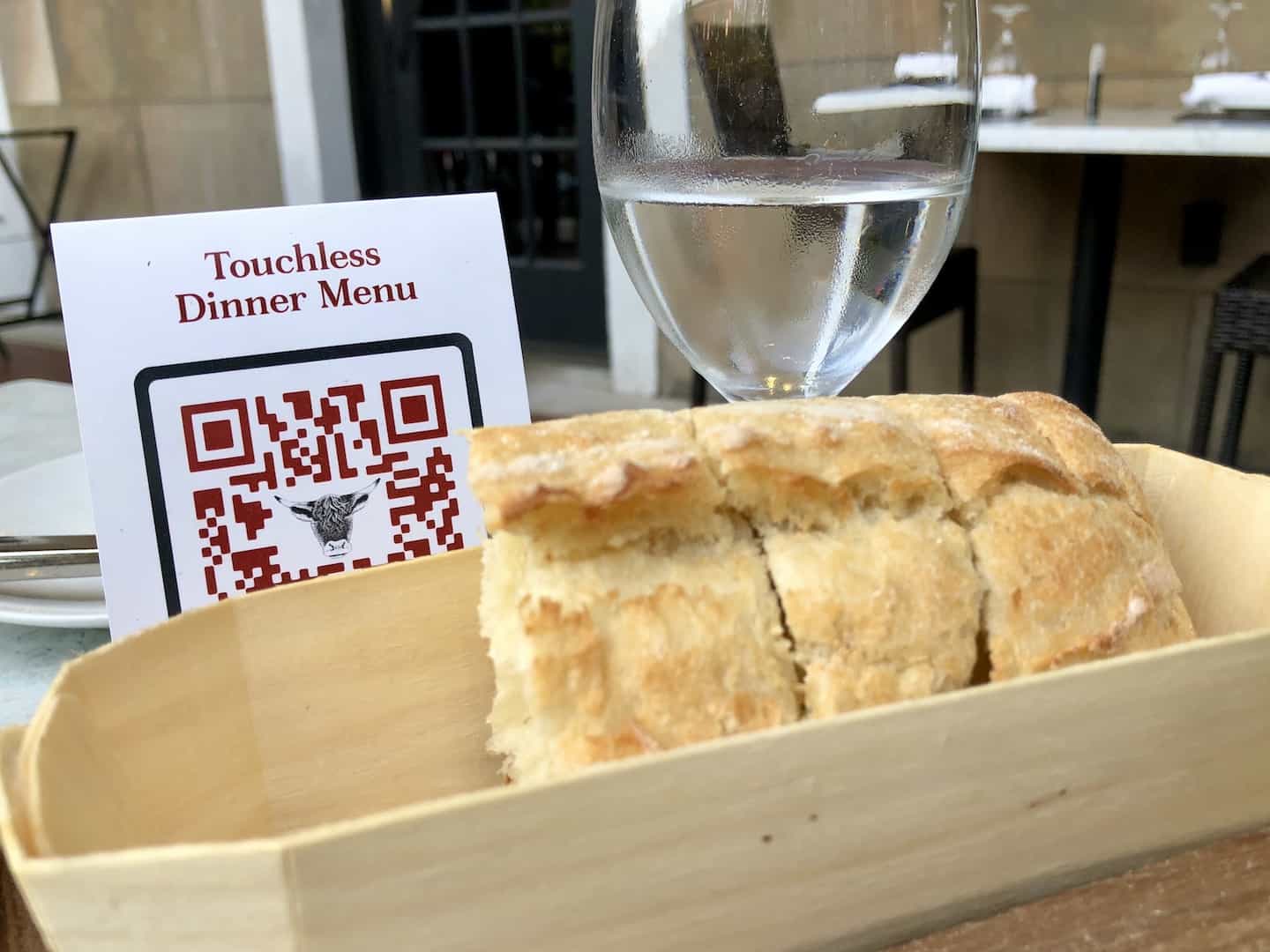
Final Thoughts
My husband and I had big plans for travel before the pandemic hit in 2020; we had two international trips booked along with a few domestic ones. Of course, our initial plans for travel that year were squashed by the virus outbreak and closed international borders. We hunkered down at home like everyone else. But with time came some opportunities that we hadn’t considered before — traveling locally to places that have low incidents of the virus outbreak. Following the news updates and figuring out where we could easily travel in a day, we took a few road trips and really enjoyed them.
Learning from our Experiences
During the pandemic, we changed some of the ways we traveled (e.g., packing coolers of food for quick breakfasts and lunches — one cooler for breakfast items, one for lunch items — to reduce virus exposure in public places). Since then, we’ve incorporated some of those changes into our regular road trip planning and packing routines as mentioned in this article.
What we learned about traveling by car during the pandemic has become our “new normal” — like many other things in life. We found we really liked driving to places within 4-5 hours from home for a long weekend and exploring wonderful regions of our country that we had overlooked in the past. We still take along snacks and sandwich fixings for our days of driving. It enables us to stop along the way to stretch our legs at a scenic spot.
Planning vs. Over Planning
Although I tend to be detail oriented in my trip planning (!), I don’t schedule every dinner out or every activity. But I do make sure I make reservations at restaurants and museums/experiences that are high on our list of “must-try” and “must-see” before leaving home.
Comments
Feel free to share a suggestion or idea that’s worked for you on road trips. Other readers may benefit from your experiences. Thanks! 🙂

